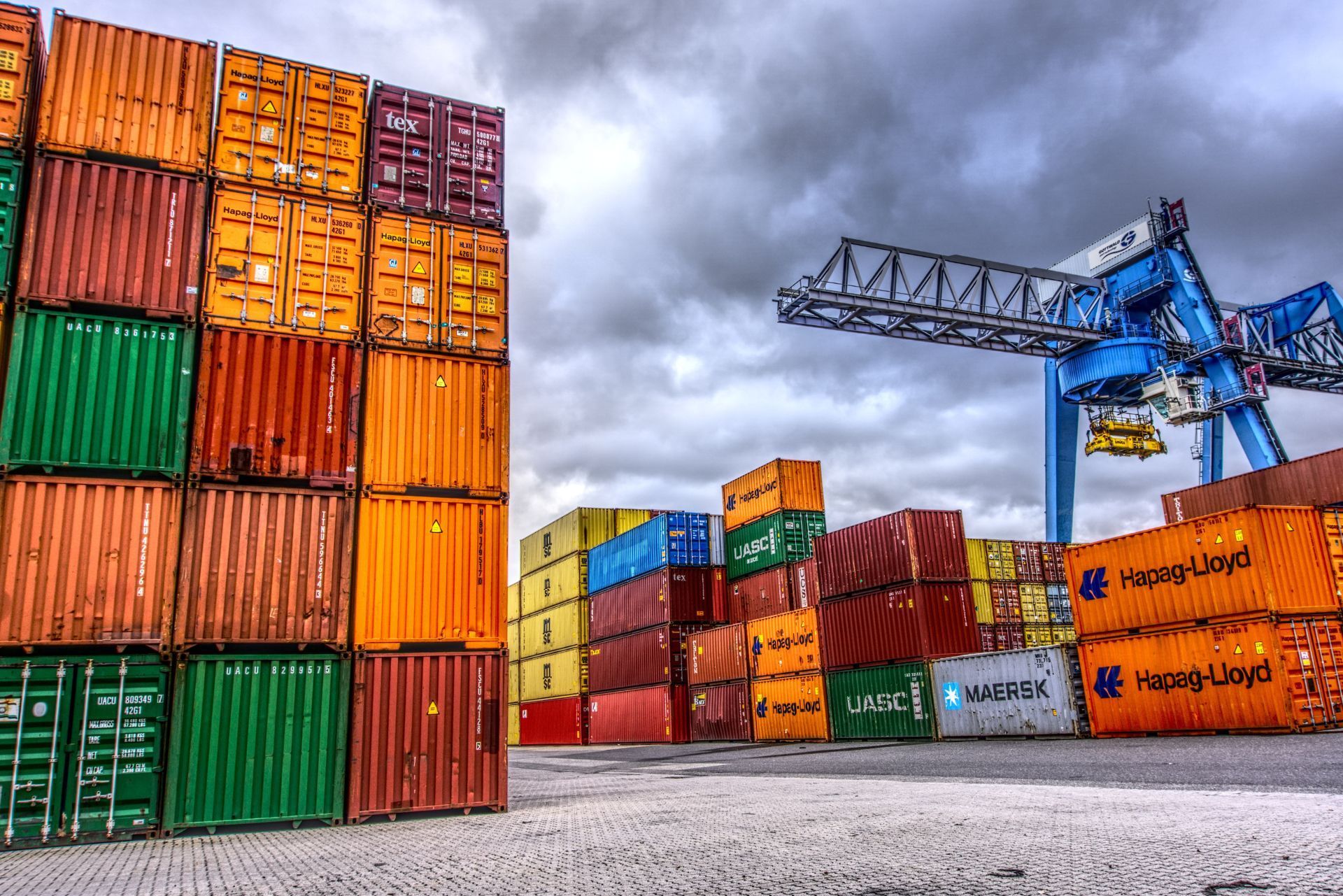Top 3 Recommended Business Policies
Index
Contact Us
Inland marine insurance is a crucial aspect of coverage that often goes overlooked. In Maryland, understanding this form of insurance can help individuals and businesses protect their valuable possessions. This article will delve into various facets of inland marine insurance, including its definition, history, key features, and how to choose the right policy for your needs.
Understanding Inland Marine Insurance
Inland marine insurance is designed to cover goods, tools, and equipment while they are in transit, as well as certain types of personal property that are stored off-site. The name may suggest a connection to marine insurance, but it covers land-based risks associated with transportation and storage.
Definition and Importance of Inland Marine Insurance
Inland marine insurance provides coverage for valuable properties that are frequently transported. This may include items like machinery, art, jewelry, or important documents. Such coverage is essential because standard homeowners or business insurance policies often exclude items while they are in transit.
The importance of inland marine insurance arises from the fact that many businesses rely heavily on transporting goods. Therefore, the risk of loss or damage during transit is a vital consideration. By having proper coverage, businesses can mitigate potential losses and maintain their operational integrity. Moreover, inland marine insurance can be tailored to meet the specific needs of various industries, ensuring that companies can protect their unique assets effectively. For instance, construction companies may require coverage for expensive tools and equipment that are often moved from site to site, while art galleries might seek protection for valuable pieces during exhibitions or transport.
The History of Inland Marine Insurance
The roots of inland marine insurance can be traced back to the early 1900s when it began as a branch of ocean marine insurance. Initially, it was designed to cover goods being shipped across waterways. However, as transportation methods expanded to include railroads and trucks, the need for inland marine insurance grew.
This historical evolution has made inland marine insurance adaptable, allowing it to effectively cover an array of risks associated with modern logistics and transportation. Over the years, it has incorporated various types of coverages that reflect the changing landscape of both businesses and personal goods transportation. Today, it encompasses not only traditional goods in transit but also specialized coverages for high-value items, such as fine art or collectibles, as well as coverage for technology and electronic equipment that are essential in today’s digital age. This adaptability ensures that as industries evolve, inland marine insurance continues to provide relevant and necessary protection for businesses and individuals alike.

Key Features of Maryland Inland Marine Insurance
Inland marine insurance policies in Maryland come with distinct features tailored to meet the needs of policyholders. Understanding these features is critical for selecting the right coverage. This type of insurance is particularly relevant for businesses that frequently transport goods or work on various job sites, as it provides a safety net against potential losses that could arise during transit or while items are stored temporarily. Additionally, it can be beneficial for individuals who own valuable personal property that may not be adequately covered by standard homeowners insurance.
Coverage Options and Limitations
Inland marine insurance policies can offer a variety of coverage options, depending on the specific needs of the insured. Common coverage options include:
- Property in transit: Coverage for items being transported from one location to another.
- Property at a temporary location: Coverage for items stored off-site, such as at a job site or a storage facility.
- Bailee coverage: Protection for personal property while in the custody of a third party, such as a repair shop.
However, there can also be limitations. For example, coverage limits may apply based on the type of goods insured or the method of transportation. It’s essential to read the policy carefully to understand what is and isn’t covered. Additionally, certain high-value items, such as art or collectibles, may require specialized coverage or endorsements to ensure they are fully protected. This is particularly important for businesses that deal with high-value inventory, as the financial implications of a loss can be significant.
Common Exclusions in Policies
While inland marine insurance can provide extensive coverage, there are common exclusions that policyholders need to be aware of. These may include:
Damage caused by wear and tear or gradual deterioration.
Losses due to natural disasters, such as floods or earthquakes, unless specifically covered.
Theft or loss of items that are not reported immediately.
Understanding these exclusions is important to avoid surprises at the time of a claim. It’s advisable to discuss with an insurance agent to clarify any gray areas. Furthermore, policyholders should consider the implications of these exclusions on their overall risk management strategy. For instance, businesses operating in areas prone to flooding may need to seek additional flood insurance to complement their inland marine policy. This proactive approach can help mitigate potential losses and ensure that all aspects of their operations are adequately protected.
Who Needs Inland Marine Insurance in Maryland?
Inland marine insurance can be beneficial not just for businesses, but also for individuals who possess valuable items that may need protection while in transit.
Businesses and Inland Marine Insurance
For businesses, especially those involved in trade, shipping, or logistics, inland marine insurance is often essential. Businesses that regularly transport equipment, products, or any valuable items can protect themselves from financial losses related to theft, damage, or misplacement.
Examples of industries that commonly utilize inland marine insurance include construction companies, art galleries, and logistics providers. Without adequate coverage, a loss during transit can result in significant financial strain. For instance, a construction company that relies on expensive machinery to complete projects on time may face delays and costs if that equipment is damaged or lost during transport. Similarly, art galleries that frequently loan or transport valuable pieces to exhibitions must safeguard against potential losses that could jeopardize their reputation and financial stability.
Individual Needs for Inland Marine Insurance
Individuals also have unique needs for inland marine insurance. For instance, those who own high-value items, like art, collectibles, or jewelry, may consider purchasing this type of coverage to ensure those items are protected while being transported or stored outside of their primary residence.
Moreover, people engaged in hobbies that involve valuable equipment, such as photographers or musicians, may find that inland marine insurance provides peace of mind concerning the transport and use of their cherished items. A professional photographer, for example, often travels to various locations for shoots and carries expensive camera gear that could be at risk during transit. Similarly, musicians who travel for performances may have instruments that are not only costly but also irreplaceable, making inland marine insurance a wise investment. This type of coverage not only protects against theft or damage but also often includes provisions for loss of income due to equipment failure, ensuring that individuals can continue their passions without significant financial setbacks.

How to Choose the Right Inland Marine Insurance
Selecting the right inland marine insurance policy requires careful consideration of various factors to ensure adequate coverage and protection.
Factors to Consider When Choosing a Policy
When evaluating different inland marine insurance policies, consider the following factors:
- Value of the items: Assess how much coverage you need based on the value of the property you want to insure.
- Type of coverage: Determine which specific coverages align with your needs, such as property in transit or bailee coverage.
- Your risk exposure: Understand the nature of your business or personal activities that may contribute to risks of loss or damage.
Taking the time to analyze these factors will lead to a more informed decision when selecting a policy. Additionally, consider the frequency and nature of your business transactions. For instance, if you regularly transport high-value goods, you might require a policy that offers broader coverage for items in transit, as opposed to a more limited policy that only covers items stored at a fixed location. Moreover, understanding seasonal fluctuations in your business can also influence the type of coverage you need; certain times of the year may see increased shipping or handling of goods, necessitating a more robust policy during those periods.
Understanding Policy Terms and Conditions
Before committing to any inland marine insurance policy, it’s imperative to thoroughly understand its terms and conditions. Key elements to review include:
- Coverage limits and deductibles: Clarify how much the policy will cover in the event of a loss and what your out-of-pocket costs will be.
- Claim process: Familiarize yourself with the procedures involved in filing a claim to ensure you’re prepared if the need arises.
- Renewal and adjustments: Understand how the policy can be adjusted over time, especially as your needs evolve.
A comprehensive understanding of these terms helps in avoiding confusion during crucial moments. Additionally, it is wise to inquire about any exclusions that may apply to your policy. Certain policies might not cover specific types of damage or loss, such as those resulting from natural disasters or acts of vandalism. Knowing these limitations upfront can help you make more informed decisions about supplementary coverage options or endorsements that may be necessary to fill any gaps in your protection. Furthermore, engaging with an insurance agent who specializes in inland marine insurance can provide valuable insights and help navigate the complexities of policy language, ensuring that you select a plan that truly meets your unique needs.
Filing a Claim with Maryland Inland Marine Insurance
Although having inland marine insurance provides protection, knowing how to file a claim is equally important when incidents occur.
Steps to Filing a Successful Claim
To file a claim successfully, follow these steps:
- Notify your insurer as soon as possible after the loss or damage occurs.
- Gather all necessary documentation, including photographs of the items, receipts, and any reports related to the incident.
- Complete the claim form provided by your insurance company and submit it along with the required documents.
Clear communication and thorough documentation can significantly expedite the claims process. It’s also advisable to keep a personal record of all communications with your insurer, including dates, times, and the names of representatives you speak with. This can be beneficial if any disputes arise later regarding the claim.
What to Expect After Filing a Claim
After submitting a claim, expect an initial acknowledgment from your insurer, followed by an adjustment process where they may assess the damage themselves. It is essential to cooperate fully, providing any additional information required.
The length of time it takes to resolve a claim can vary based on the complexity of the case. However, maintaining open lines of communication with your insurance representative will ensure you remain updated throughout the process. Be prepared for potential follow-up questions or requests for further documentation, as this is a standard part of the claims assessment. Understanding the nuances of your policy can also help you anticipate what aspects of your claim might be scrutinized more closely.
Additionally, it's important to familiarize yourself with the specific terms and conditions of your inland marine insurance policy. Some policies may have particular exclusions or limitations that could affect your claim. Knowing these details in advance can help you manage your expectations and prepare for any discussions with your insurer regarding coverage and compensation. This proactive approach can make a significant difference in how smoothly your claim is processed and resolved.
Frequently Asked Questions about Inland Marine Insurance
As with any insurance type, there are several frequently asked questions that can help illuminate aspects of inland marine insurance.
Common Misconceptions about Inland Marine Insurance
One common misconception is that inland marine insurance is only for businesses. In reality, individuals with valuable personal items can also benefit from this coverage. For instance, collectors of fine art, antiques, or high-end jewelry often find that standard homeowners insurance does not provide adequate protection for their prized possessions. Inland marine insurance can bridge this gap, offering specialized coverage that considers the unique risks associated with transporting and storing such items. Another misconception is that all risks are covered, which is not the case; understanding specifics about coverage limits and exclusions is crucial. Policies may vary significantly, and knowing what is and isn't included can save policyholders from unexpected losses.
Answers to Your Inland Marine Insurance Queries
For those new to inland marine insurance, questions often arise about its necessity and effectiveness. It's essential to consult with an insurance professional who can provide tailored advice based on your specific situation. They can clarify the distinctions between inland marine insurance and other types of coverage, ensuring you make an informed choice. For example, while homeowners insurance typically covers personal property within the home, it may not extend to items in transit or those stored off-site. Inland marine insurance fills this gap by covering items while they are being transported, whether by land or water, and even while they are being stored at a location that is not your primary residence.
Additionally, many people wonder about the claims process associated with inland marine insurance. Understanding how to file a claim, what documentation is required, and the timeline for processing can alleviate concerns during stressful situations. It’s advisable to keep detailed records of your valuable items, including photographs, receipts, and appraisals, as these can expedite the claims process and ensure you receive fair compensation. In summary, inland marine insurance offers vital coverage for both businesses and individuals in Maryland. By thoroughly understanding its features, requirements, and claims process, you can safeguard your valuable assets effectively.
For over 40 years D.H. Lloyd & Associates has provided commercial insurance solutions covering multiple facet of business risk.
QUICK LINKS
CONTACT US
Phone:
202-223-1506
Email: contactus@dhlloyd.com
Address: 1625 K St NW, Washington, DC 20006, United States
All Rights Reserved | D.H. Lloyd & Associates | Privacy Policy | Legal Disclaimer | Sitemap | Built & SEO'd by Convirtue

